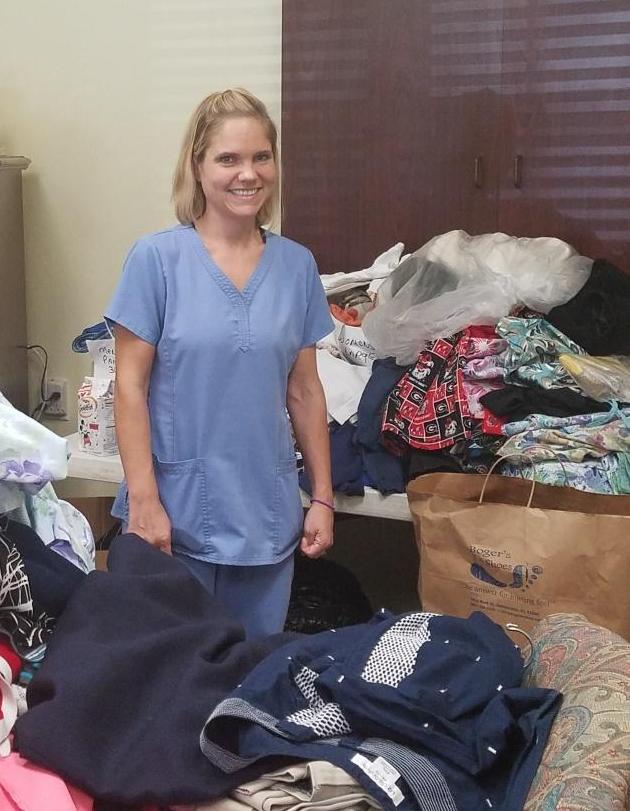 |
| Monday, October 8th: Catherine Schuman (Katie), an SLP at a facility in Ponte Vedra, FL, received notification their facility would be housing displaced residents evacuating from the path of Hurricane Michael. The residents and staff arrived with a few changes of clothes, prepared to return to Port St. Joe after Michael’s dissipation. Wednesday, October 10th: Hurricane Michael devastated Port St. Joe in a way none of them expected. Homes were destroyed, vehicles flooded, and possessions lost. Katie recognized the need immediately, not only for the residents, but the CNAs and nursing staff who accompanied them, and now had no idea when they would return home or what would be left. Katie has been part of a moms group in Ponte Vedra for several years now, and when it came time to elicit the generosity of the “Real House Moms of Nocatee” she didn’t hesitate. The response to her call for adult clothing and toiletries was overwhelming. The donations received filled two rooms in the facility. Today she says “They’re good. There is enough.” Other organizations continue gathering for children and families affected, but Katie’s desire was to ensure her residents and colleagues were comfortable. Katie was insistent in sharing the thanks and praise with her fellow neighborhood moms because without them it wouldn’t have been possible to meet the need. To the Real House Moms of Nocatee and Katie Schuman, thank you for your compassion and deliberate action to ensure our residents and staff are cared for. Katie, we are honored to have you as one of our own. |

